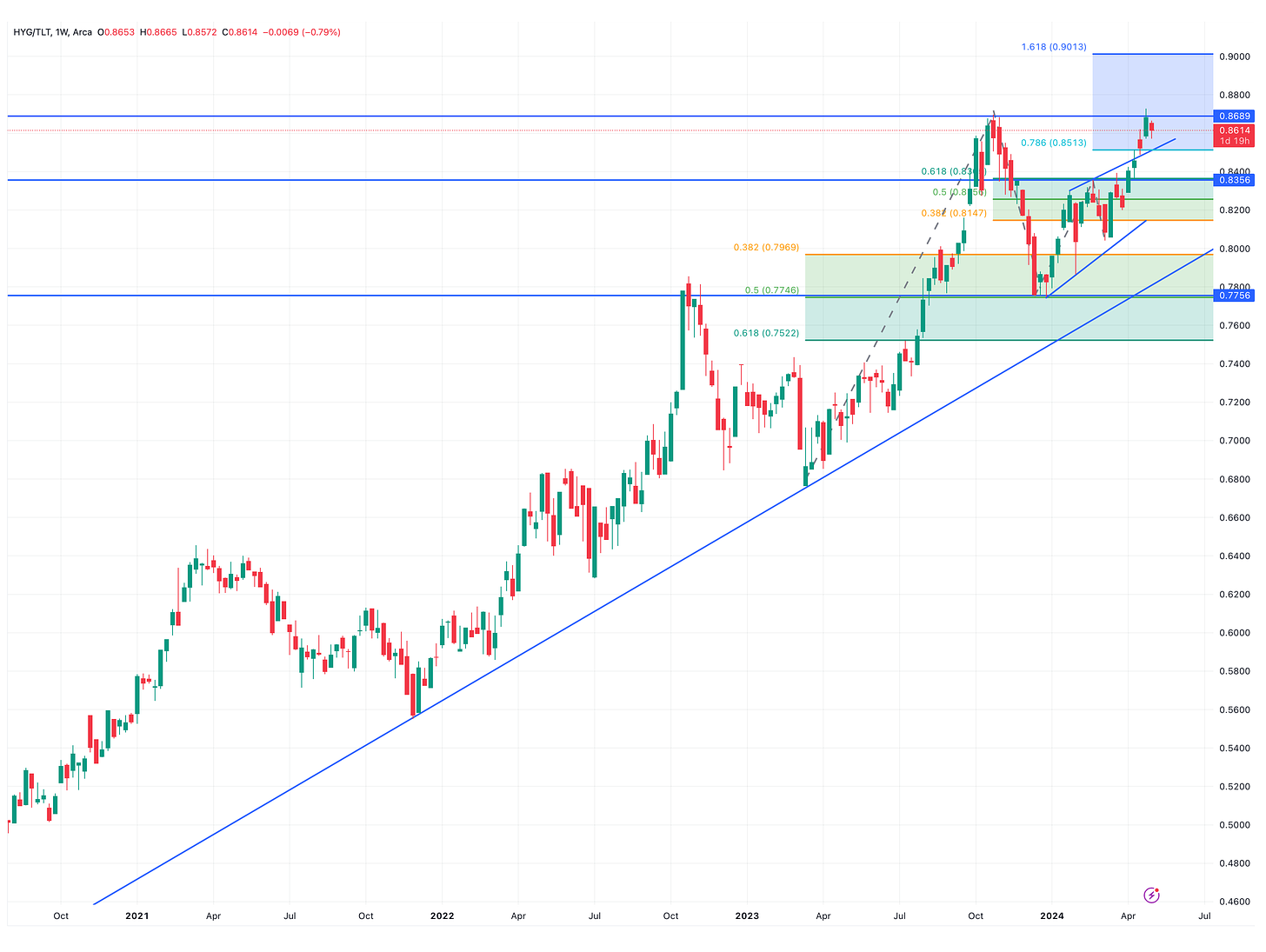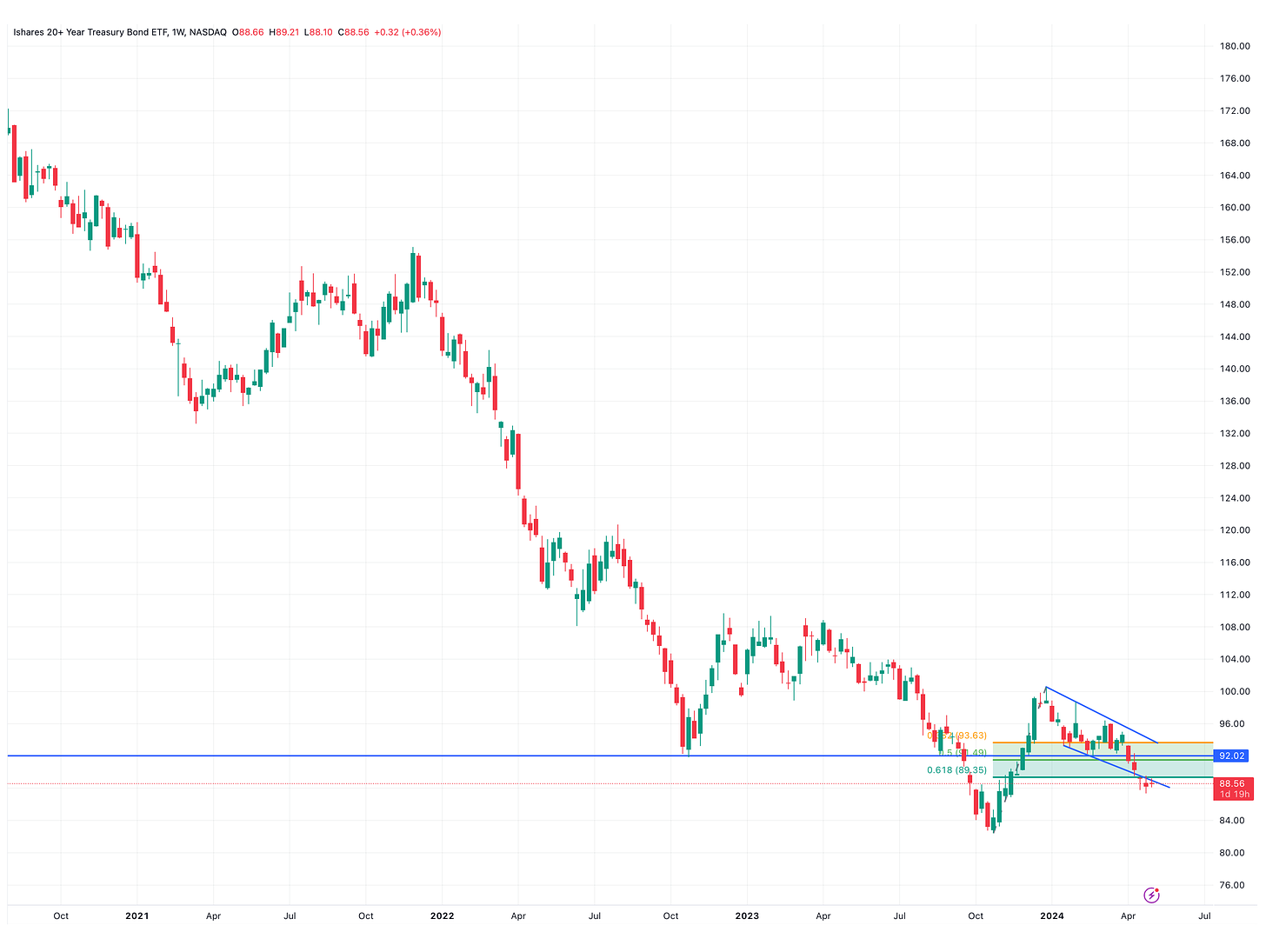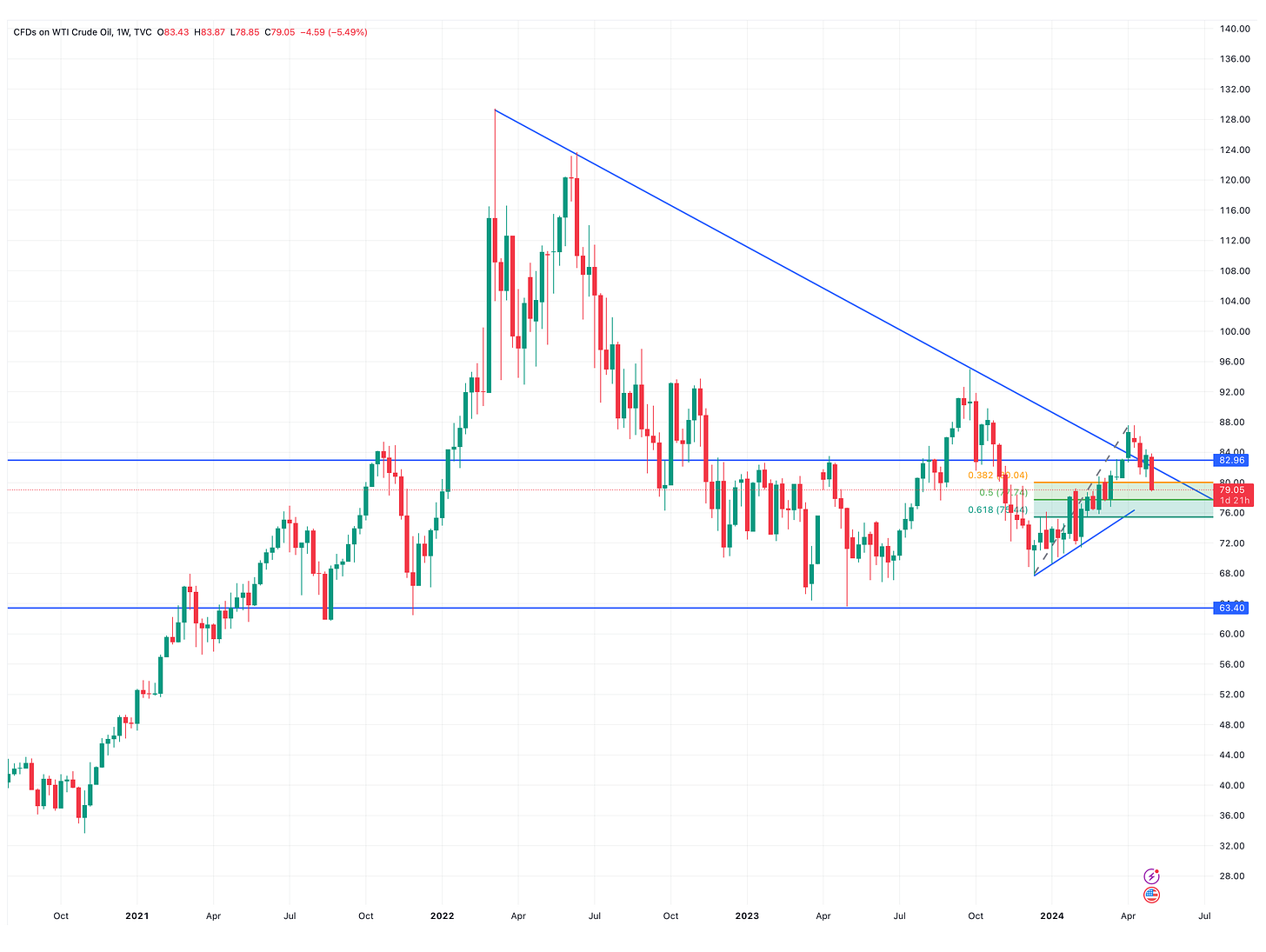The Fed continues to make up monetary theory as it goes along. From “inflation is transitory” it flipped to “higher for longer” only to flip back to “3 rate cuts this year” so it can flip back again to “higher for longer”.
But now it also flipped its Quantitative Tightening (QT) stance from “will continue despite rate cuts” to “reduced pace”.
In my previous post “What is the Fed hiding?”, I argued that monetary policy was already too loose by many measures.
But my favorite measure is the ratio of high yield (AKA Junk) bonds to treasuries.
I explained this idea of buying high yield bonds while shorting treasuries a while back. With a very small amount of money you can buy a large sum of high yield bonds by selling treasuries short. You get paid high interest while paying low interest on a sum that is much larger than your investment (leverage).
If more people do the same, your returns are accelerated, which would be an up move on the chart above. This would happen if people expected inflation.
On the other hand, people would dump high yield bonds and buy treasuries if they expected a recession. That is why I use this chart as a barometer.
And since my last post the chart broke higher, declaring inflation rather than recession. Therefore, no one was surprised by today’s Fed flip back to “higher for longer”.
Inflation should lead to further dumping or shorting of treasuries but for the reduced pace of QT combined with the treasury’s buy back program. If both agencies coordinate Yield Curve Control (YCC), they may be able to prevent a spike in long term interest rates. On the other hand, the Fed is still selling treasuries and the treasury department is planning to borrow more than ever in history this year.
For now treasuries continue their journey lower as shown below by the treasuries ETF, TLT:
Now let’s look at Oil:
As you can see, part of what drove inflation in 2021 and 2022 was the spike in oil price due to the war in Ukraine. And part of the drop in inflation over 2023 was driven by the drop in oil price.
The drop in oil price was achieved by releasing almost all of the oil from the Strategic Petroleum Reserve. But now this card has been played and we have a new war.
Gaza is the first front in the Israel-Iran war. Iran is determined to destroy Israel. And for that purpose it built a ring of proxies around it. In order to deter Israel from engaging it directly it is pursuing a nuclear bomb.
The war was started by the proxy Hamas in Gaza. And the last battle on this front may begin this week or postponed in favor of the second front in Lebanon.
Even before fully engaging with Lebanon, Iran was drawn into a direct conflict with Israel after the latter assassinated the Iranian general who ran Hamas in Gaza and Hezbollah in Lebanon. While Israel was fighting Hamas in Gaza, Hezbollah has been bombarding all of northern Israel.
Keep reading with a 7-day free trial
Subscribe to Economic Defense to keep reading this post and get 7 days of free access to the full post archives.





